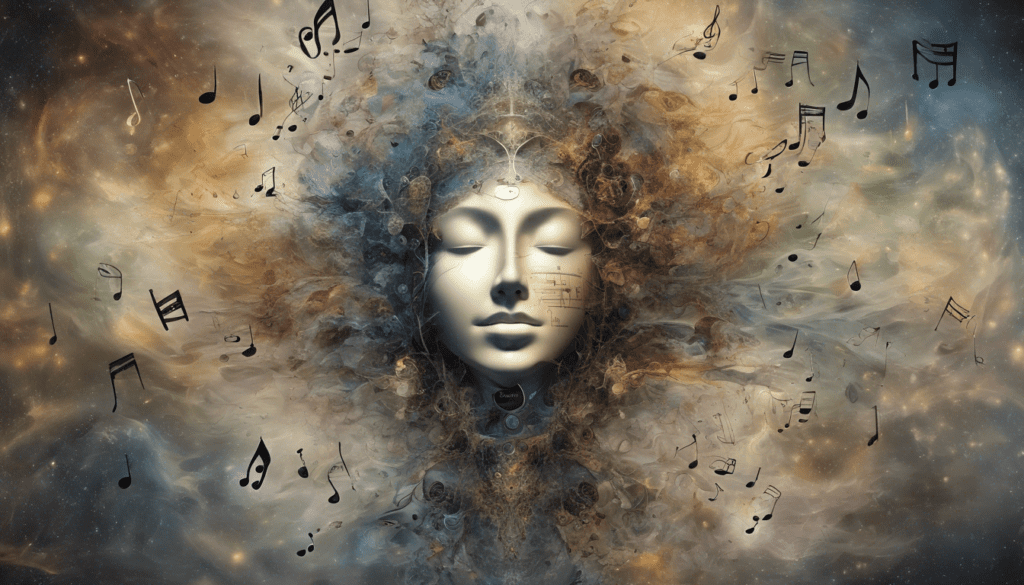Art and music have long been regarded as powerful mediums for expressing and exploring the depths of human consciousness. In the midst of the dystopia of modern life, they offer a respite, a means of transcendence, and a way to reflect upon the nature of our existence.
Art, in its various forms, has the ability to evoke emotions, challenge societal norms, and provide a lens through which we can examine the human condition. Whether it be through paintings, sculptures, or installations, artists have the unique ability to capture the essence of a moment, a feeling, or an idea. Through their creations, they invite us to question, to ponder, and to engage with the world around us.
Similarly, music has the power to transport us to different realms, to stir our souls, and to connect us with something beyond ourselves. From symphonies to punk rock, every genre has its own way of resonating with individuals, allowing them to tap into their emotions and experiences. It is through music that we can find solace, inspiration, and a sense of unity amidst the chaos of the modern world.

But what is the nature of consciousness in this dystopian landscape we find ourselves in? The constant bombardment of information, the pressures of success, and the disconnection from nature and each other have left many feeling lost and disconnected. It is within this context that art and music become even more vital.
They serve as a reminder of our shared humanity, a catalyst for introspection, and a call to action. They can challenge the status quo, expose the flaws of our society, and offer glimpses of hope and possibility. In a world where the superficial often takes precedence, art and music provide a space for authenticity, vulnerability, and genuine connection.
As we navigate the complexities of modern life, let us not forget the transformative power of art and music. Let us embrace their ability to awaken our consciousness, to inspire change, and to create a more compassionate and harmonious world.
Embracing the Harmony: The Intrinsic Link Between Art and Consciousness
The world of art, in its many forms, has the potential to summon deep visceral responses within us—responses that dive into the vast ocean of our consciousness, creating waves of thought and feeling.
Art serves as a mirror, reflecting the nuances of human consciousness. It can light up the corners of our minds we’ve barely touched, igniting a dance of thoughts, emotions, and creativity. The creation of art—be it painting, sculpture, or any other medium—is a byproduct of this dance, the physical manifestation of an intangible process taking place within the complexity of our consciousness.
Through art, we can explore the depth of our own consciousness. We witness the seemingly random birth of thoughts and ideas, discover hidden emotions, and flirt with our wildest imaginations. Art provides a playground for our perception, gently nudging us out of our comfort zones and challenging us to explore uncharted territories of our own minds.
The Soundtrack of Consciousness: How Music Alters Perception
Let’s dive deeper into this fascinating intersection. Just as a film score sets the mood for a dramatic scene, the music we listen to can color our emotional and sensory experiences, shaping our perception of reality. This is not a casual connection, it’s a profound weave so intricate, that scientists are just beginning to untangle it.
We all intuitively know the persuasive power of music; the way it can capture our attention, trigger our emotions, and transport us to another time and place. But what’s the underlying science to this phenomenon? Why does music hold such an immense sway over us?
A major part of the answer lies in our biology. You see, when we listen to music, complex neural processes occur in our brain, leading to the release of chemical substances like dopamine and oxytocin. This can induce a multitude of reactions or ‘feelings’ – from joy to sorrow, excitement to serenity.
Furthermore, our personal experiences and cultural standards also play a pathbreaking role in the manner we perceive music. For instance, a song we listened to during a memorable moment may invoke nostalgia, while a lullaby from our childhood might resonate with comfort and safety. This is where music, as art, crosses over to a deeply personal realm of consciousness.
Therefore, we can assert that music has the power to alter our perception because it directly interacts with our emotions and memories – two critical aspects of our consciousness.
But, music’s capability to expand consciousness goes far beyond our emotional layer. The rhythm and melody can tap into deeper, more instinctual dimensions of our being. For instance, the cadence of a drumbeat can stimulate our heart rate, and an uplifting chorus can make us feel as if we’re soaring high above the clouds.
So, is it any wonder why we’re drawn to music from all walks of life and throughout the ages? Its harmonic chemistry with our consciousness is an endless dance, a life-long symphony. It’s an art form that translates the most profound aspects of our experience into a language that words often fail to express.
So next time you listen to your favorite track, remember: you’re not just hearing a melody or rhythm. You’re tapping into the very fabric of consciousness, exploring the vast labyrinth of your inner universe through the mystical power of sound. Embrace it, let the music move you, and unveil new dimensions of your being.


